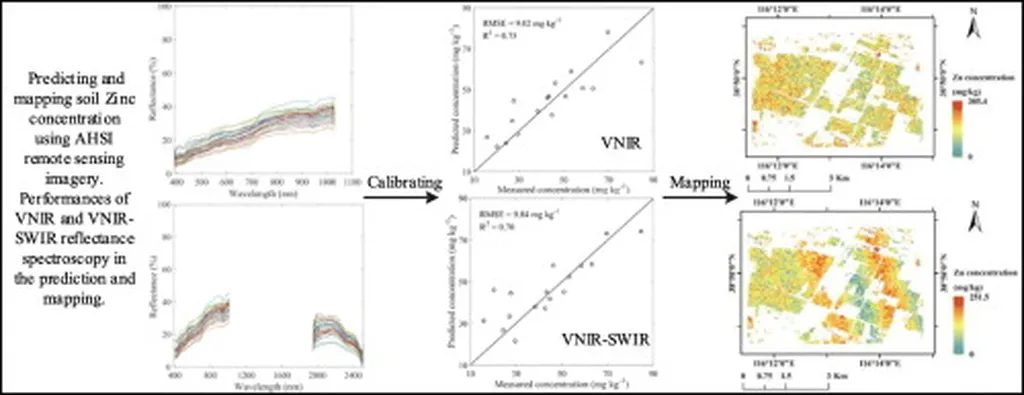In the heart of Iran’s dry and semi-arid regions, a groundbreaking study led by Mohammad Hosseinpour-Zarnaq from the University of Tehran is revolutionizing how we understand and manage soil texture. By harnessing the power of hyperspectral remote sensing, Hosseinpour-Zarnaq and his team are paving the way for smarter agricultural and environmental management practices. Their research, published in *Ecological Informatics* (which translates to “Ecological Information Science”), offers a glimpse into a future where precision agriculture and environmental monitoring are more efficient and accurate than ever before.
Hyperspectral remote sensing provides a broad range of spectral bands with up-to-date, cost-effective, and spatially explicit resolution. This technology is a game-changer for smart agriculture and environmental management. In their study, the team modeled and generated a composite map of soil texture variability using PRISMA (PRecursore IperSpettrale della Missione Applicativa) images. These images were collected from agricultural areas in Iran’s challenging dry and semi-arid regions.
The researchers explored various workflow combinations of environmental covariates, integrating hyperspectral data with topography, climate, soil characteristics, vegetation-land use, and land use to enhance predictions. “The analysis clarified the significance of all factors influencing prediction performance,” Hosseinpour-Zarnaq explained. This comprehensive approach allowed them to compare the performance of different machine learning algorithms, including random forest (RF), partial least squares regression (PLSR), multiple linear regression (MLR), support vector machine regression (SVR), decision trees (DTs), and multilayer perceptron (MLP) neural networks.
The results were impressive. The team found that an accurate method for predicting and mapping sand, clay, and silt content involved a combination of topography, climate, vegetation, and soil covariates offered by the SCORPAN model and the RF model. This combination achieved R2 values of 0.54, 0.25, and 0.33 for predictions of sand, clay, and silt, respectively. Using preprocessed hyperspectral data demonstrated commendable performance in predicting soil characteristics, with RF achieving R2 values of 0.40, 0.40, and 0.12 for the respective soil characteristics.
The influence of spectral unmixing and vegetation effects on croplands significantly enhanced the prediction and mapping of soil texture using PRISMA data. “Integrating preprocessed hyperspectral data with DSM (Digital Surface Model) covariates resulted in improved predictive performance for sand and clay content, yielding R2 values of 0.64 and 0.51, respectively,” Hosseinpour-Zarnaq noted. These findings highlight the potential of environmental covariates and the modeling approach for enhancing the spatial coverage of real soil status to monitor diversity and refine soil mapping for more effective agricultural management practices.
The implications of this research are vast, particularly for the energy sector. Accurate soil texture mapping can lead to more efficient use of resources, better crop yields, and more sustainable agricultural practices. As the world grapples with climate change and the need for sustainable energy solutions, this technology could play a crucial role in optimizing land use and improving agricultural productivity.
Hosseinpour-Zarnaq’s work is a testament to the power of integrating advanced technologies with traditional agricultural practices. By leveraging hyperspectral remote sensing and machine learning, we can gain deeper insights into soil properties and make more informed decisions about land management. This research not only shapes the future of agriculture but also has the potential to influence other sectors, including energy and environmental conservation.
As we look ahead, the integration of hyperspectral remote sensing and machine learning algorithms promises to revolutionize how we approach soil texture evaluation and agricultural management. Hosseinpour-Zarnaq’s study, published in *Ecological Informatics*, serves as a beacon of innovation, guiding us toward a more sustainable and efficient future.

